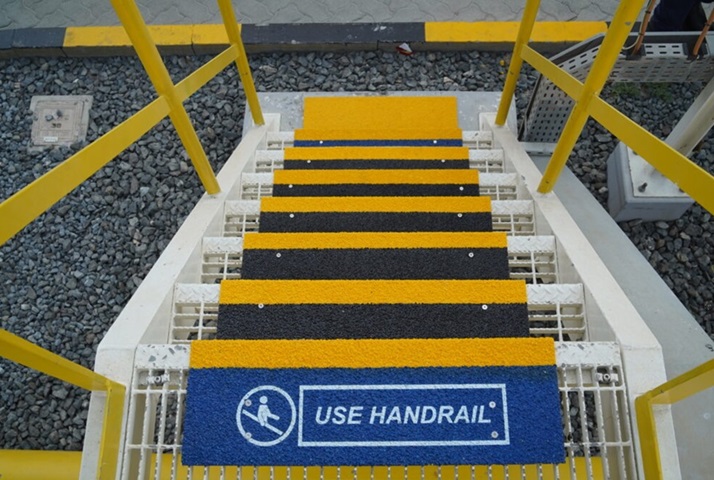Discover a comprehensive range of professional anti-slip solutions for industry, construction, and offshore applications, including anti-slip tape, stair tread covers, anti-slip ladder rungs, floor plates/gratings, anti-slip floor coatings, or anti-slip strips. These solutions are crucial in various industries, particularly where slippery surfaces pose safety risks.

Where are anti-slip solutions typically used?
- Food Industry: Production facilities, warehouses, and refrigeration units where spills of liquids like water, oils, and food waste may occur.
- Logistics and Warehousing: Warehouses, cold storage units, loading docks, ramps, and areas where pallets and goods are moved to prevent falls and accidents.
- Healthcare: Hospitals, care facilities, and medical laboratories to prevent slip accidents on floors often contaminated with water, disinfectants, and other liquids.
- Retail: Supermarkets, malls, and stores to protect customers from falls on smooth floors, especially in areas like produce sections where food spills can occur.
- Shipbuilding and Shipping: On ships, boats, and dock facilities to reduce the risk of falls on wet decks or during inclement weather.
- Sports and Leisure: In swimming pools, gyms, sports stadiums, and recreational facilities to prevent accidents on slippery surfaces, especially in environments where water is present.
- Construction Industry: On construction sites, stairs, scaffolding, and temporary walkways to protect construction workers from falls and injuries, especially in adverse weather or muddy conditions.
- Chemical Industry: In production plants, labs, and warehouses where hazardous chemicals may spill to prevent workplace accidents and ensure employee safety.
- Oil and Gas Industry / Offshore: On drilling rigs, production platforms, and other offshore facilities where marine conditions and oil or chemical spills can lead to extremely slippery surfaces.
- Wind Energy Industry: On wind turbines, wind farms, and in wind parks where maintenance work is performed at great heights and slippery conditions occur due to moisture, rain, or ice.
What are the slip resistance classes?
Slip resistance classes classify flooring based on their slip resistance properties, aiming to assess the slippery hazard of floor surfaces and ensure safety in various environments. The classes range from R9 to R13, with R9 having the lowest slip resistance and R13 the highest. Here’s a brief description of slip resistance classes:
- R9: Low slip resistance suitable for low-risk areas like dry areas.
- R10: Medium slip resistance suitable for moderate-risk areas like bathrooms or locker rooms.
- R11: Increased slip resistance suitable for higher-risk areas like kitchens or wet areas.
- R12: Higher slip resistance suitable for high-risk areas like public pools.
- R13: Highest slip resistance suitable for extremely high-risk areas like industrial kitchens or food processing areas.
Choosing the right slip resistance class according to specific usage environments and regulations is crucial to avoiding accidents and injuries: DGUV Rule 108-003: Floors in workrooms and work areas with a risk of slipping.
